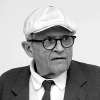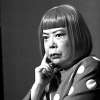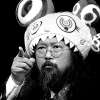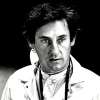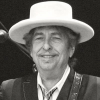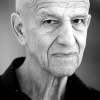Post-War
& Contemporary
Discover art for sale. Buy and sell Post-War & Contemporary prints & editions online. Spanning 1945 to today, Post-War & Contemporary Art is characterised by its unprecedented affront to artistic norms.
Art for sale
Movement Overview
Post-War and Contemporary art covers the period following World War II until the present day. Many themes are as relevant now as they were in 1945, such as identity, beauty, conflict and reflecting on the times. Some artists embraced the past, while others wanted to break away from it. Many of the most famous Post-War artists, like Cy Twombly and Francis Bacon, lived in America and Europe. But today’s sought-after Contemporary artists live and work around the world, from Yayoi Kusama and Yoshitomo Nara in Japan to Gerhard Richter in Germany.
Post-war & Contemporary Art has its origins in the social, societal and cultural upheaval of World War II. Catalysing a period of intense reflection and artistic development, this international event was a pivotal force in the lives of many who went on to be highly influential in the European and international art scenes during the middle part of the 20th and early 21st centuries.
Lucian Freud, for example, left his native Berlin with his family in 1933, escaping the catastrophic rise of Nazism and finding safe haven in England. Moving to London, he later became one of what R.B. Kitaj named the ‘School of London’ artists alongside the likes of his contemporary, Francis Bacon. Before fleeing across the Iron Curtain to West Germany in 1961, Gerhard Richter received some of his early artistic training at the Dresden Academy of Fine Arts in the German Democratic Republic, or East Germany, where he was commissioned to produce murals and oil paintings in the socialist realist style on behalf of the communist state.
Post-War & Contemporary artists’s radical and innovative responses to the tumult of the mid-20th century saw a questioning of creative norms unseen since the mid-19th century, eventually giving way to the likes of parodical and subversive Contemporary Artists, such as Jeff Koons, Grayson Perry, Tracey Emin, and Damien Hirst.
As a genre, Post-War & Contemporary Art brings together a huge number of artistic practices but is broadly concerned with the deconstruction of artistic norms, on the one hand, and social and cultural commentary, on the other. Ground-breaking in its remit, Post-War & Contemporary Art is notable for its complex relationship to art history, historical events, and societal change, with its form often reflecting key developments in each.
Much-loved British artist David Hockney, for example, was a resident of London during the city’s post-war years. Cold, grey and too expensive – it cost the princely sum of £1 for a drink – London was devoid of artistic possibility and the Bohemian lifestyle that made it possible, Hockney once said. In his early Love paintings, produced whilst still a student at the Royal College of Art, Hockney made gestural and expressionistic depictions of figures. We Two Boys Together Clinging (1960) takes its inspiration from American writer Walt Whitman’s poem of the same name, and makes euphemistic and coded references to Hockney’s homosexuality at a time when it will still illegal in Britain. Moving to Los Angeles in 1964, however, Hockney was introduced to a wave of societal and cultural change that directly influenced his increasingly colourful, unconventionally representational and unashamedly open work, such as the Erotic Print series.
Some of the most famous Post-War & Contemporary Artists include Gerhard Richter, Francis Bacon, Lucian Freud, Damien Hirst, David Hockney, and Grayson Perry.
Many of these artists experiment with the limitations of form and content in their work, often using unconventional methods and media. British artist Damien Hirst, most notably, has stretched the boundaries of Contemporary Art by incorporating the bodies of dead animals into his work. One of the artist’s most iconic and controversial pieces. Mother And Child (Divided), was exhibited at the 1993 Venice Biennale. Constitutive of four glass-walled tanks containing a bisected cow and calf preserved in formaldehyde, its continued exhibition has enraged animal rights groups for many years.
Contemporary Art can also be characterised by the way in which it comments on recent Art History. Hirst's work For The Love Of God recalls Marcel Duchamp’s use of everyday objects to create works he dubbed ‘readymades’, a practice echoed by another of Hirst’s friends and contemporaries, Jeff Koons. The reproducibility of Hirst’s works, many of which are created by a team of assistants, are also inspired by the artistic practice and philosophy of American Pop Artist, Andy Warhol, who would mass produce his works as part of a wider rhetorical engagement with American consumer culture.
Stylistically, Post-War & Contemporary Art is not a singular genre. Difficult to confine to any particular artistic technique or medium, it is a direct product of the many social, cultural and historical happenings of the Post-War and Contemporary eras, not only in Europe but around the world.
As the work of Post-war & Contemporary artists like Lucian Freud and Gerhard Richter show, some of the category’s major figures have opted for more traditional artistic practices in their work, such as etching and painting. Despite their use of more traditional materials, however, and as iconic works such as David Dawson or the photorealist pieces Kerze and Betty evidence, they are nonetheless testimony to an unconventional and innovative approach to image-making characteristic of Post-War & Contemporary Art as a whole.
Technology has also played a major role in the development of Post-War & Contemporary Art, giving birth to a plethora of new ways of working. David Hockney, for example, has long been concerned with the exploring different ways of ‘looking’ and ‘seeing’ in his work, and this particular pre-occupation has seen him engage in a lengthy artistic dialogue with photography and the camera. The artist’s early experimentations with photography were birthed by the Polaroid camera he first discovered upon his move to the United States in 1964. Early photographic compositions involved taking a number of photographs of a given subject and arranging them in a grid-like pattern. Creating a patchwork of images, the famous white border of the Polaroid photo would disrupt the forms these photos depicted. In later works Hockney moved away from the Polaroid and towards other photographic media, such as the 110, small-format camera, overlapping the edges of his photos so as to create Photo Collages that offer fresh perspectives of his subjects.
Jeff Koons and Damien Hirst epitomise Contemporary Art today. The pair’s artworks submit art’s definitional limits to persistent questioning, and are just as well-known for their sparking controversies as their multi-million-dollar prize tags.
Koons first broke through into the international art scene during the mid-1980s when he came known as an artist-cum-stockbroker who enlarged everyday objects in order to turn them into sculptures. Inspired by Marcel Duchamp, Koons would use household items, such as the vacuum cleaners and polishers, to make artworks which questioned consumerism and were unashamedly engaged in an acts of self-merchandising.
Using household objects in a similar way, Hirst’s installation works have explored social taboos, such as death. Inspired by American conceptual artist Sol LeWitt, Hirst’s piece Medicine Cabinets (1988) was made using his grandmother’s empty medication packaging, which he had requested she leave him in the event of her death. Winning the prestigious Turner Prize in 1995, Hirst famously said ‘It's amazing what you can do with an E in A-Level art, a twisted imagination and a chainsaw.’
Post-War & Contemporary Art continues to perform well in the international art market. In 2006, David Hockney’s iconic painting The Splash sold for £2.9 million to an anonymous buyer. In advance of a major retrospective at London’s Tate Gallery in February 2017, the price of Hockney’s artworks soared. In November 2016, his painting The Gate (2000) sold for just under $7 million. This trend continued and on the 15th of November 2018, Hockney’s 1972 work Portrait Of An Artist (Pool With Two Figures) sold at Christie’s auction house in New York City for $90 million (£70 million), becoming the most expensive artwork by a living artist ever sold at auction.
Damien Hirst is one of the most commercially successful and wealthy artists alive today. In 2008 Hirst queried established practice and took his own art directly to auction, achieving many millions of pounds in sales. In June of 2007, Hirst gained the world record for the most expensive work of art sold by a living artist: Lullaby Spring, a 3-metre wide cabinet filled with over 6,000 pills, sold for $19.2 million.
We connect buyers and sellers of original contemporary and modern prints, facilitating discreet, independent, investment led private sales. Fixed, clear and mutually agreed upon between both parties - simple, safe and secure.
MyArtBroker, 55-56 Russell Square, London WC1B 4HP (by appointment only)
875 Washington St, New York, NY 10014, United States (by appointment only)
- © 2025 MyArtBroker. All rights reserved.
- Privacy Policy
- Cookie policy
- Website terms of use
- Terms and conditions
